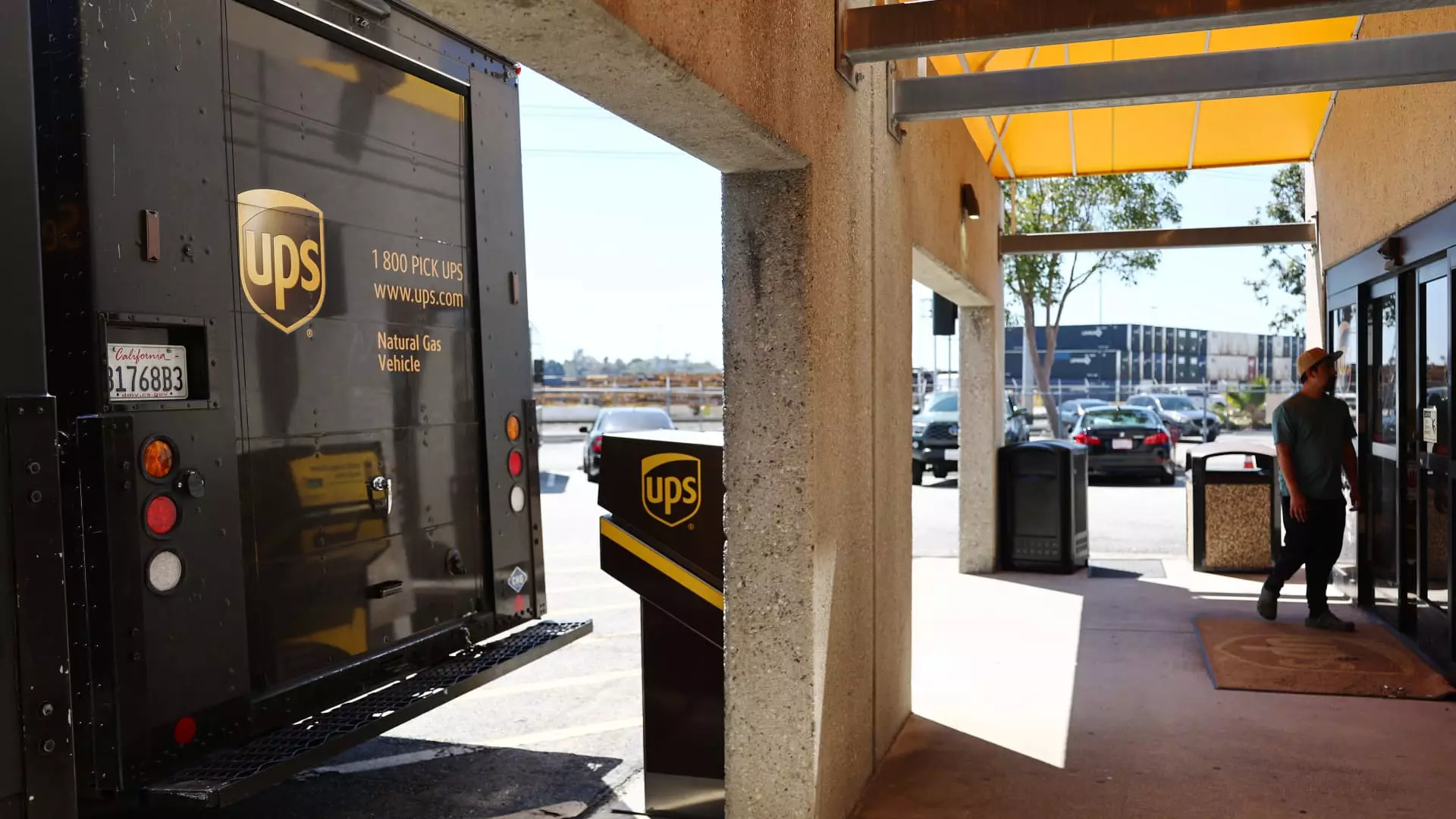United Parcel Service recently reported its second-quarter financial results, which fell below expectations. The company’s profit and revenue were lower than anticipated, leading to a 7% drop in shares during premarket trading. UPS revised its 2024 revenue guidance to approximately $93 billion, down from the previous forecast of $94.5 billion. Additionally, full-year capital expenditures are now expected to be around $4 billion, lower than the initial estimation of $4.5 billion.
Despite the lower than expected financial performance, UPS has been making strategic moves to expand its international presence. The company recently announced the sale of its trucking business Coyote Logistics to RXO Logistics. This transaction is expected to be completed by the end of the year. Furthermore, UPS is in the process of acquiring Mexican express delivery company Estafeta, as part of its effort to broaden its global reach.
Quarterly Results Overview
In the quarter ended June 30, UPS reported earnings per share of $1.79, falling short of the expected $1.99. Revenue for the same period was $21.8 billion, missing Wall Street’s estimate of $22.18 billion. The company’s net income for the quarter was $1.41 billion, or $1.65 per share, compared to $2.08 billion, or $2.42 per share, the previous year. After adjusting for the impact of settling an “international regulatory matter,” UPS reported earnings of $1.79 per share.
UPS experienced a decline in revenue across its domestic and international segments. The U.S. operation saw a 1.9% decrease in revenue, attributed to changes in product mix. Similarly, the international segment reported a 1% decrease in revenue, mainly due to a 2.9% drop in average daily volume. However, the supply chain solutions segment managed to increase its revenue by 2.6% compared to the same period last year, driven by growth in logistics, particularly in healthcare.
Market Outlook and Competition
The shipping industry is currently facing challenges such as weak freight demand and soft pricing, leading to what some analysts describe as a global freight recession. Investors are closely watching UPS earnings to gauge improvements in demand. The company recently secured an air cargo contract with the United States Postal Service, replacing rival FedEx as the primary air cargo provider starting September 30. This significant contract win is expected to strengthen UPS’s position in the market.
UPS’s second-quarter performance fell short of expectations, leading to a downward trend in share prices. The company has adjusted its revenue guidance for 2024 and is making strategic moves to expand its global footprint through acquisitions and partnerships. Despite challenging market conditions, UPS remains optimistic about returning to operating profit growth in the future.

